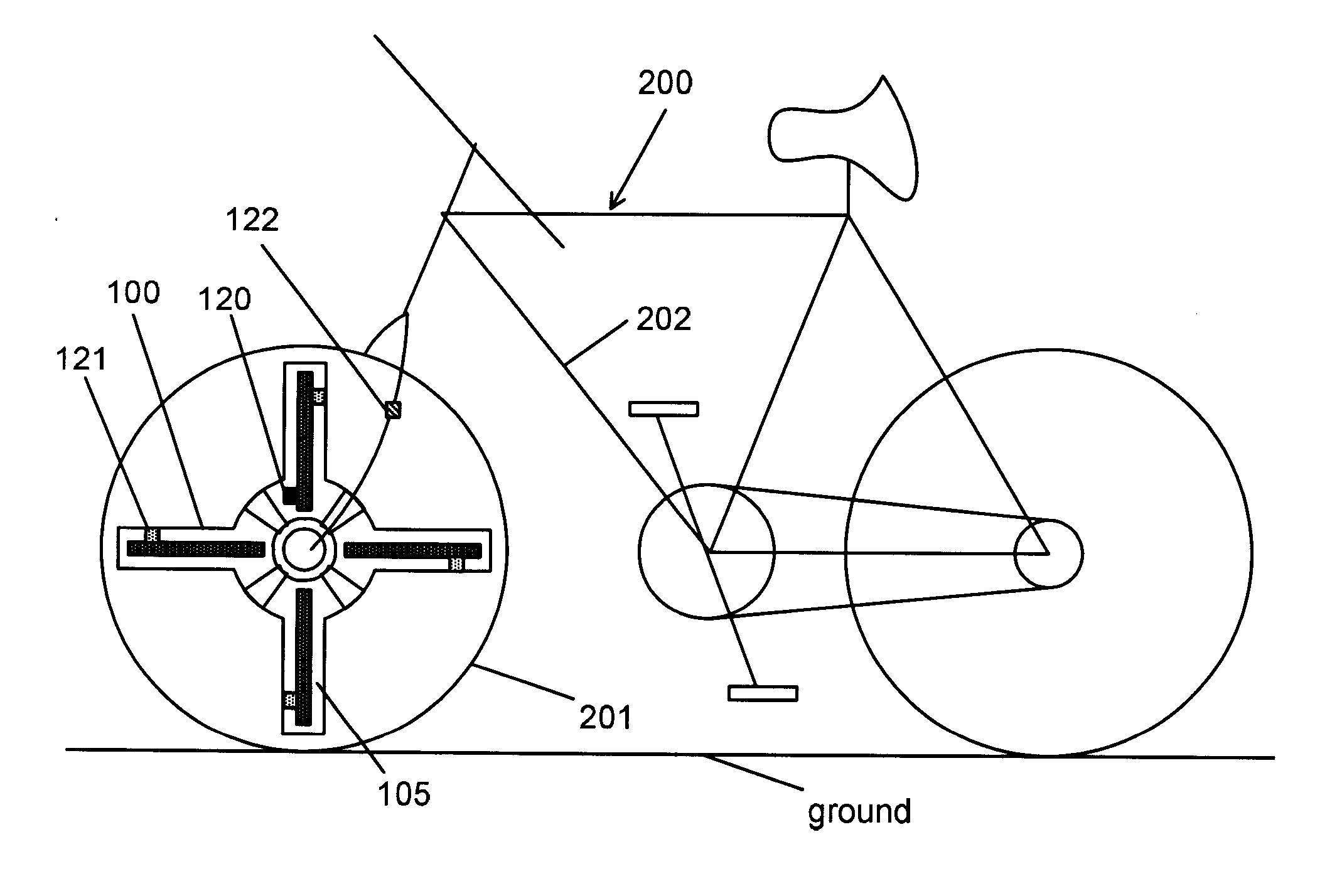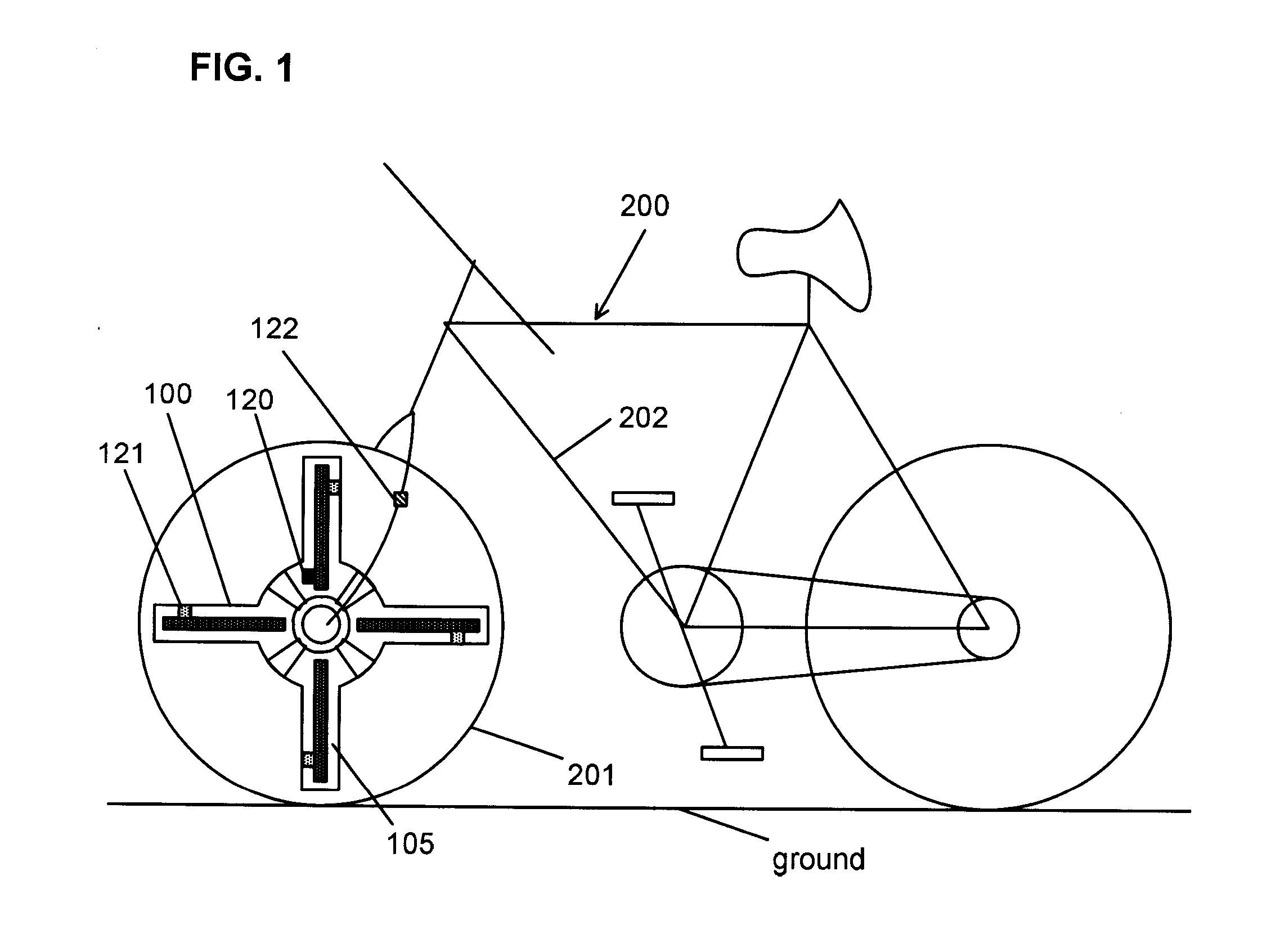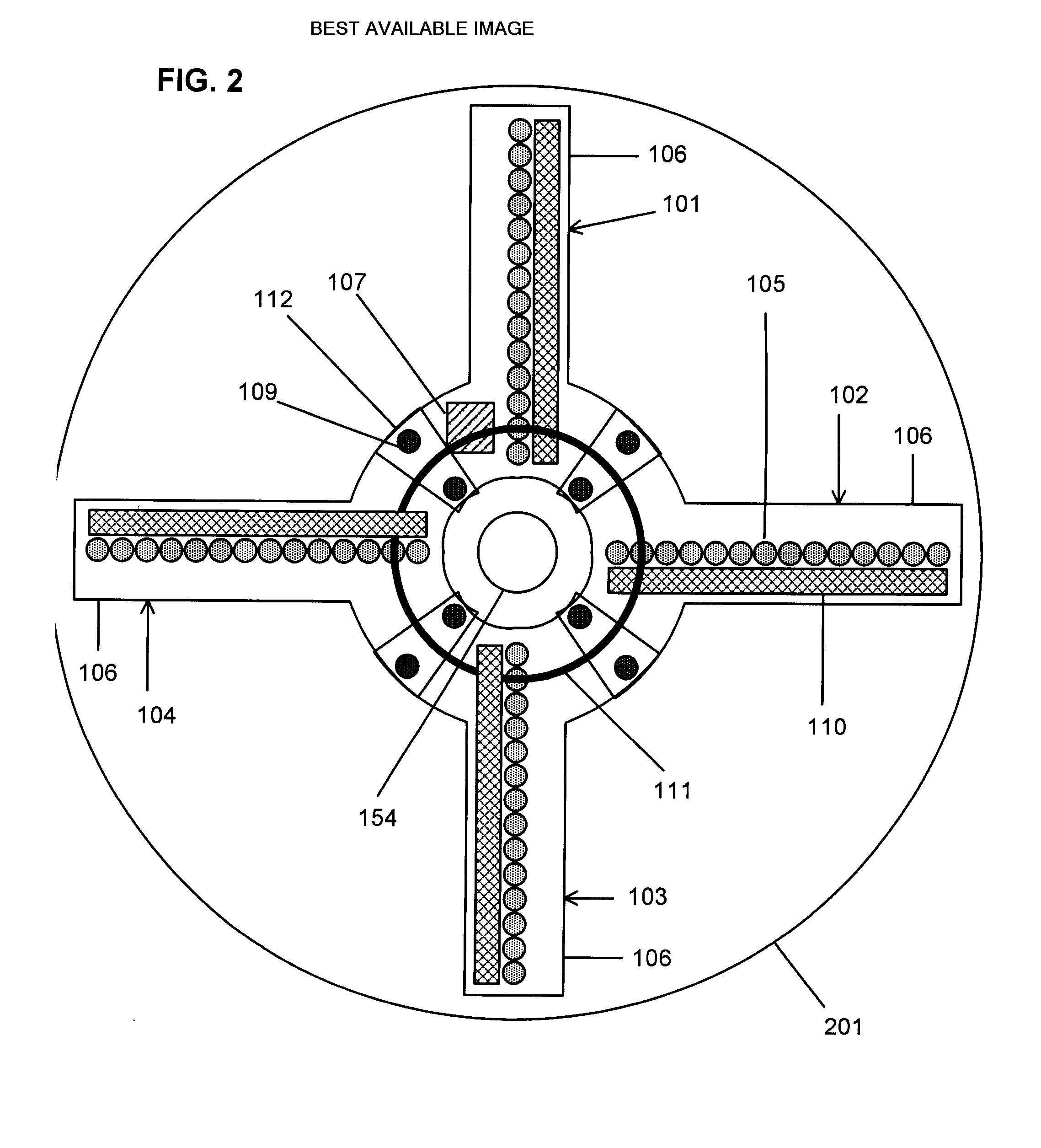Rotating wheel electronic display apparatus
a technology of electronic display and rotating wheel, which is applied in the field of rotating wheel electronic display apparatus, can solve the problems of limiting the size and complexity of the display it is capable of producing, requiring high rotation rate to produce a quality display, and its large single-piece circuit board is comparatively very expensive to manufacture, and achieves the effect of convenient installation
- Summary
- Abstract
- Description
- Claims
- Application Information
AI Technical Summary
Benefits of technology
Problems solved by technology
Method used
Image
Examples
Embodiment Construction
[0031]It will be apparent to those skilled in the art, that is, to those who have knowledge or experience in this area of technology, that many uses and design variations are possible for the rotating wheel electronic display apparatus disclosed herein. The following detailed discussion of various alternative and preferred embodiments will illustrate the general principles of the invention with reference to specific embodiments. Other embodiments suitable for other applications will be apparent to those skilled in the art given the benefit of this disclosure.
[0032]In this specification and claims, the term “POV” refers to the Persistence Of Vision effect of the human eye. In this specification and claims, the term “linear bus” refers to an electrically conductive pathway having the topology of a line. In this specification and claims, the term “loop bus” refers to an electrically conductive pathway having the topology of a loop. In this specification and claims, the terms “shared el...
PUM
 Login to View More
Login to View More Abstract
Description
Claims
Application Information
 Login to View More
Login to View More - R&D
- Intellectual Property
- Life Sciences
- Materials
- Tech Scout
- Unparalleled Data Quality
- Higher Quality Content
- 60% Fewer Hallucinations
Browse by: Latest US Patents, China's latest patents, Technical Efficacy Thesaurus, Application Domain, Technology Topic, Popular Technical Reports.
© 2025 PatSnap. All rights reserved.Legal|Privacy policy|Modern Slavery Act Transparency Statement|Sitemap|About US| Contact US: help@patsnap.com



